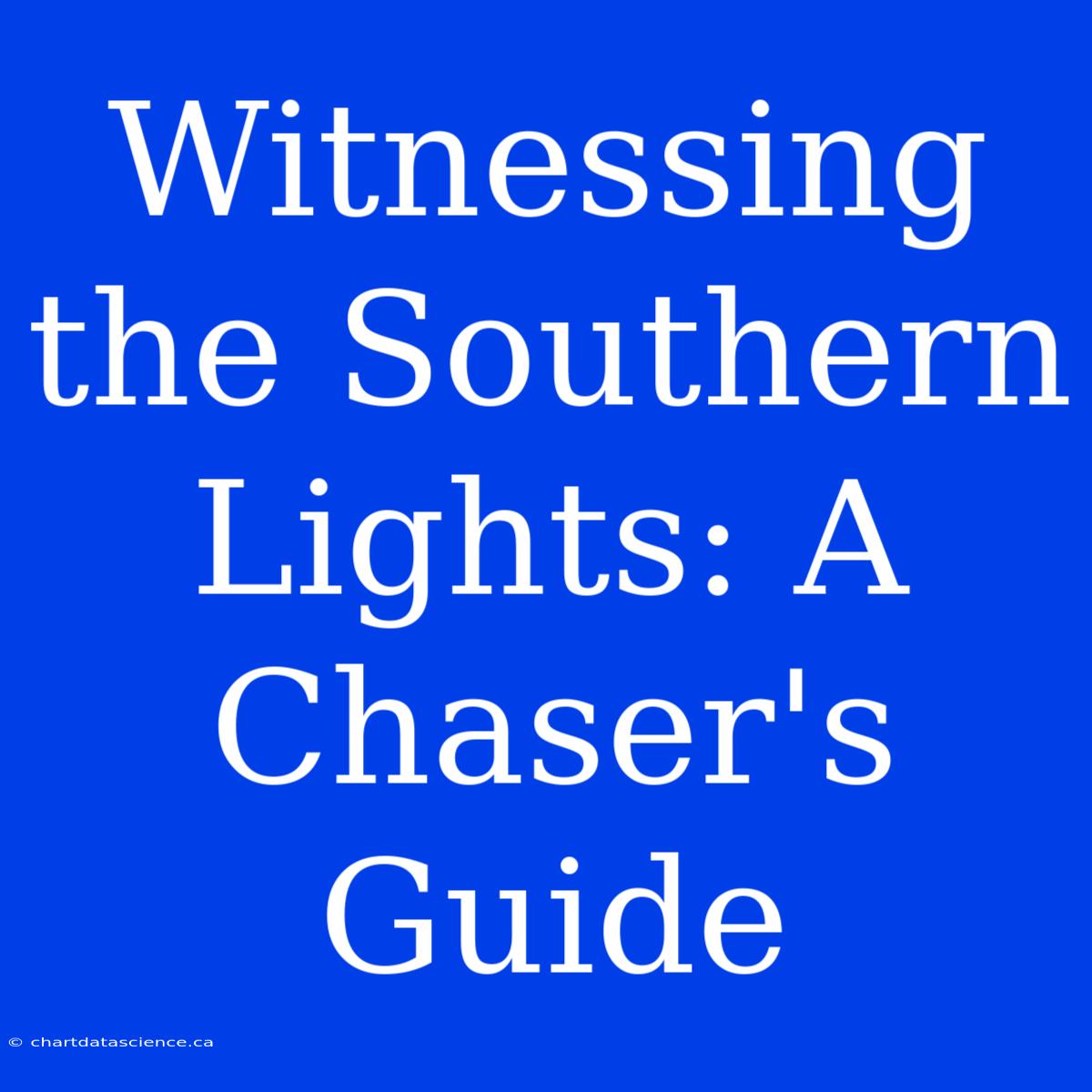Witnessing the Southern Lights: A Chaser's Guide
So you're looking to chase the aurora australis, huh? You want to see the mesmerizing dance of the southern lights? Well, you've come to the right place! This guide will help you plan your aurora chasing adventure.
Where to go?
First things first, you need to know where to go! The best places to see the southern lights are in the Southern Hemisphere, obviously. Think places like:
- New Zealand: The South Island offers some of the best viewing spots, with dark skies and remote locations.
- Tasmania: Australia's island state is another top spot for aurora hunters, with stunning clear skies and a decent chance of seeing the lights.
- Antarctica: The ultimate destination for witnessing the aurora australis in all its glory. But be warned, it's not exactly a quick weekend trip.
- South America: Chile and Argentina offer some spectacular views of the aurora, especially in the southern regions.
- South Africa: While not as famous as other locations, South Africa's southernmost points can offer a glimpse of the aurora on clear nights.
When to go?
The best time to see the aurora australis is during the winter months, when the nights are long and dark. Here's a general timeline:
- March - September: This period offers the best chance to see the southern lights, with the darkest skies and increased solar activity.
- June - August: These months are considered peak aurora season, with the most frequent and intense displays.
How to increase your chances of seeing the aurora?
- Check the forecast: There are websites and apps specifically designed to track aurora activity. These forecasts are essential, as they'll tell you when the lights are likely to be visible.
- Get away from city lights: Light pollution is the aurora's biggest enemy! Find a remote location with dark skies for the best viewing experience.
- Be patient: Seeing the aurora takes time and patience. Don't expect a show on your first night. Stay out late, give your eyes time to adjust to the dark, and you'll be rewarded with a spectacular sight.
Tips for capturing the aurora:
- Use a camera with manual settings: A DSLR or mirrorless camera with manual settings will give you the best results for aurora photography.
- Use a wide-angle lens: A wide-angle lens will capture a wider field of view, perfect for photographing the aurora and the surrounding landscape.
- Set a long exposure: To capture the faint light of the aurora, you'll need to set a long exposure, typically between 10 and 30 seconds.
Important things to consider:
- Dress warmly: Aurora hunting often involves standing outside for long periods, so make sure to dress warmly, even in the summer months.
- Pack snacks and drinks: It's a good idea to bring along some snacks and drinks to keep you energized during your aurora chase.
- Be safe: Always be aware of your surroundings, especially when exploring remote locations.
Chasing the aurora australis is an unforgettable experience. It's a journey that will test your patience, but the reward is seeing one of nature's most spectacular light shows. So get out there, embrace the adventure, and witness the magical southern lights!

